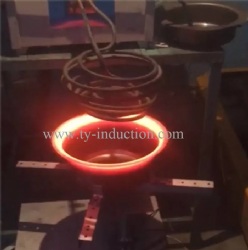Our Products
- Brake Linings for General Machines (2)
- Automatic Tool Changing Systems for CNC Machining Centers (ATC) (2)
- CNC Rotary Tables (1)
- Multiangular Milling Heads (1)
- Tool Pots and Automatic Tool Changers for Machining Centers (1)
- Automatic Control Systems (1)
- Automatic Welding Equipment (1)
- Automated Equipment for Transformers and Rectifiers (1)
Contact Information
Banzhuyuan Subdistrict, Xindu District
Tel: 86-135-41287190
Fax: --
Induction Annealing Machine
Model: Induction Annealing Machine
Category: Machinery Parts and Components / Machinery Parts and Components / Brake Linings for General Machines
Characteristics
Induction Annealing Machine
Specifications
Product Description
Induction annealing is a process used to heat metal components using an electromagnetic field. An induction coil surrounds the metal, and an alternating current is passed through the coil. This creates an electromagnetic field that induces an electrical current in the metal component, which in turn generates heat. The metal is then heated to a specific temperature, called the annealing temperature, which is maintained for a certain period of time, called the annealing time.
Induction annealing is a process in which a material is heated using an induction heating device and then cooled at a controlled rate in order to soften or improve its mechanical properties. Induction annealing equipment can offer a number of benefits over other types of heating methods, including:
High heating speeds: Induction heating is a very fast process, and induction annealing equipment can heat a material to the desired temperature in a matter of seconds. This can significantly increase productivity and reduce downtime.
High precision: Induction heating is a highly controllable process, and induction annealing equipment can precisely control the temperature and heating rate of the material. This allows for consistent and repeatable results.
Energy efficiency: Induction heating is an energy-efficient process, as the heat is generated directly in the material rather than using a heat-transfer medium. This can lead to lower energy costs and a reduction in carbon emissions.
Featured products








